Showing Spotlights 97 - 104 of 203 in category All (newest first):
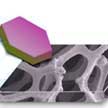 Efficient water splitting for large-scale, industrial applications requires highly active, low cost, and robust catalysts. Motivated by this challenge, enormous efforts have been devoted to developing cost-efficient alternatives including sulfides, selenides, phosphides, and many other nonprecious transition metal compounds. Now, scientists have shown for the first time that metals or metal hydroxides can be rapidly converted into phosphides at low temperature using a newly developed plasma-assisted route.
Efficient water splitting for large-scale, industrial applications requires highly active, low cost, and robust catalysts. Motivated by this challenge, enormous efforts have been devoted to developing cost-efficient alternatives including sulfides, selenides, phosphides, and many other nonprecious transition metal compounds. Now, scientists have shown for the first time that metals or metal hydroxides can be rapidly converted into phosphides at low temperature using a newly developed plasma-assisted route.
Nov 17th, 2016
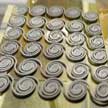 Researchers have demonstrated a fully stretchable energy harvester for thermal waste, which is very simple to fabricate and uses inexpensive substrate materials such polymers or paper. Thermoelectric generators (TEGs) promise a cheap and pragmatic way to obtain energy out of waste heat. The novelty of this work is to effectively integrate the high-performance of inorganic thermoelectric materials with the mechanical advantages of affordable organic materials (polymers, paper) and the use of innovative geometries that can be inherently stretched (spirals, helixes).
Researchers have demonstrated a fully stretchable energy harvester for thermal waste, which is very simple to fabricate and uses inexpensive substrate materials such polymers or paper. Thermoelectric generators (TEGs) promise a cheap and pragmatic way to obtain energy out of waste heat. The novelty of this work is to effectively integrate the high-performance of inorganic thermoelectric materials with the mechanical advantages of affordable organic materials (polymers, paper) and the use of innovative geometries that can be inherently stretched (spirals, helixes).
Nov 14th, 2016
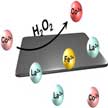 Oxygen evolution reaction (OER) is the core process - but also the bottleneck - in many energy devices such as metal-air batteries and water-splitting techniques, calling for new insights in rational design of OER electrocatalysts. The perovskite family exhibits superb OER reactivity, but its poor conductivity remains a big problem, not to mention that the morphology of perovskite oxides is hard to control. In situ hybridization of perovskite oxides with conductive frameworks is an efficient strategy to solve these problems, as researchers report in new work.
Oxygen evolution reaction (OER) is the core process - but also the bottleneck - in many energy devices such as metal-air batteries and water-splitting techniques, calling for new insights in rational design of OER electrocatalysts. The perovskite family exhibits superb OER reactivity, but its poor conductivity remains a big problem, not to mention that the morphology of perovskite oxides is hard to control. In situ hybridization of perovskite oxides with conductive frameworks is an efficient strategy to solve these problems, as researchers report in new work.
Oct 24th, 2016
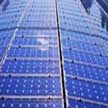 Solar cells absorb incoming sunlight and convert a part of photon energy into electricity. The remainder of photon energy is dissipated as heat. Although the idea is rather counter-intuitive, 'reverse solar cell' systems can also generate electric power by emitting rather than absorbing photons. Such systems - known as thermoradiative cells - generate voltage and electric power via non-equilibrium thermal radiation of infrared photons. Thermoradiative cells offer an opportunity to generate clean energy by harvesting radiation from largely untapped terrestrial thermal emission sources, potentially including the Earth itself.
Solar cells absorb incoming sunlight and convert a part of photon energy into electricity. The remainder of photon energy is dissipated as heat. Although the idea is rather counter-intuitive, 'reverse solar cell' systems can also generate electric power by emitting rather than absorbing photons. Such systems - known as thermoradiative cells - generate voltage and electric power via non-equilibrium thermal radiation of infrared photons. Thermoradiative cells offer an opportunity to generate clean energy by harvesting radiation from largely untapped terrestrial thermal emission sources, potentially including the Earth itself.
Oct 14th, 2016
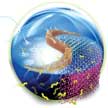 Researchers have explored the role of intrinsic bulk electrical conductivity and surface polarity in the electrocatalysis of polysulfide redox reactions. They synthesized highly porous and conductive titanium carbide (TiC)-based composite cathode materials and to assemble lithium-sulfur (Li-S) batteries with high sulfur loading. Li-S cells employing the as-synthesized TiC-based cathode exhibited reduced internal resistance, enhanced energy efficiency, and prolonged service life.
Researchers have explored the role of intrinsic bulk electrical conductivity and surface polarity in the electrocatalysis of polysulfide redox reactions. They synthesized highly porous and conductive titanium carbide (TiC)-based composite cathode materials and to assemble lithium-sulfur (Li-S) batteries with high sulfur loading. Li-S cells employing the as-synthesized TiC-based cathode exhibited reduced internal resistance, enhanced energy efficiency, and prolonged service life.
Oct 10th, 2016
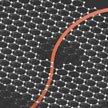 Traditionally, the size of electrode materials in supercapacitors is reduced to nanometers to enable high surface area and more room for storing more amounts of energy. But the microscopic electron distribution in nanocarbons limits the total amount of stored energy through a property called 'quantum capacitance'.
Although a lot of charge could be stored in the pores on nanocarbons due to their high surface area, their inherently low quantum capacitance reduces the net energy that could be drawn from supercapacitors. Researchers have controllably added nitrogen atoms to graphene to achieve carbon supercapacitors ready for practical applications.
Traditionally, the size of electrode materials in supercapacitors is reduced to nanometers to enable high surface area and more room for storing more amounts of energy. But the microscopic electron distribution in nanocarbons limits the total amount of stored energy through a property called 'quantum capacitance'.
Although a lot of charge could be stored in the pores on nanocarbons due to their high surface area, their inherently low quantum capacitance reduces the net energy that could be drawn from supercapacitors. Researchers have controllably added nitrogen atoms to graphene to achieve carbon supercapacitors ready for practical applications.
Aug 25th, 2016
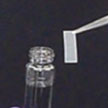 The fact that temperature differentials (heat) are ubiquitously present in our environment makes thermoelectric energy harvesting a highly attractive research field. New work highlights the fabrication of flexible thermoelectric materials and modules by merging colloidal nanomaterials (quantum dots) that can be tuned for efficient heat-to-electricity energy conversion with naturally abundant cellulose paper that are low in cost and have inherently low thermal conductivity.
The fact that temperature differentials (heat) are ubiquitously present in our environment makes thermoelectric energy harvesting a highly attractive research field. New work highlights the fabrication of flexible thermoelectric materials and modules by merging colloidal nanomaterials (quantum dots) that can be tuned for efficient heat-to-electricity energy conversion with naturally abundant cellulose paper that are low in cost and have inherently low thermal conductivity.
Aug 23rd, 2016
 Sodium-ion batteries (SIBs) represent an attractive alternative to lithium-ion batteries, owing to the fact that sodium resources are practically inexhaustible and evenly distributed around the world while the ion insertion chemistry is largely identical to that of lithium. Researchers have now rationally designed and fabricated a sodium ion full battery where both of the cathode and anode materials possessed very unique two-dimensional nanostructured architecture. The 2D nanostructured architecture results in excellent rate capability and stable cycling performance.
Sodium-ion batteries (SIBs) represent an attractive alternative to lithium-ion batteries, owing to the fact that sodium resources are practically inexhaustible and evenly distributed around the world while the ion insertion chemistry is largely identical to that of lithium. Researchers have now rationally designed and fabricated a sodium ion full battery where both of the cathode and anode materials possessed very unique two-dimensional nanostructured architecture. The 2D nanostructured architecture results in excellent rate capability and stable cycling performance.
Aug 17th, 2016
 Efficient water splitting for large-scale, industrial applications requires highly active, low cost, and robust catalysts. Motivated by this challenge, enormous efforts have been devoted to developing cost-efficient alternatives including sulfides, selenides, phosphides, and many other nonprecious transition metal compounds. Now, scientists have shown for the first time that metals or metal hydroxides can be rapidly converted into phosphides at low temperature using a newly developed plasma-assisted route.
Efficient water splitting for large-scale, industrial applications requires highly active, low cost, and robust catalysts. Motivated by this challenge, enormous efforts have been devoted to developing cost-efficient alternatives including sulfides, selenides, phosphides, and many other nonprecious transition metal compounds. Now, scientists have shown for the first time that metals or metal hydroxides can be rapidly converted into phosphides at low temperature using a newly developed plasma-assisted route.
 Subscribe to our Nanotechnology Spotlight feed
Subscribe to our Nanotechnology Spotlight feed





